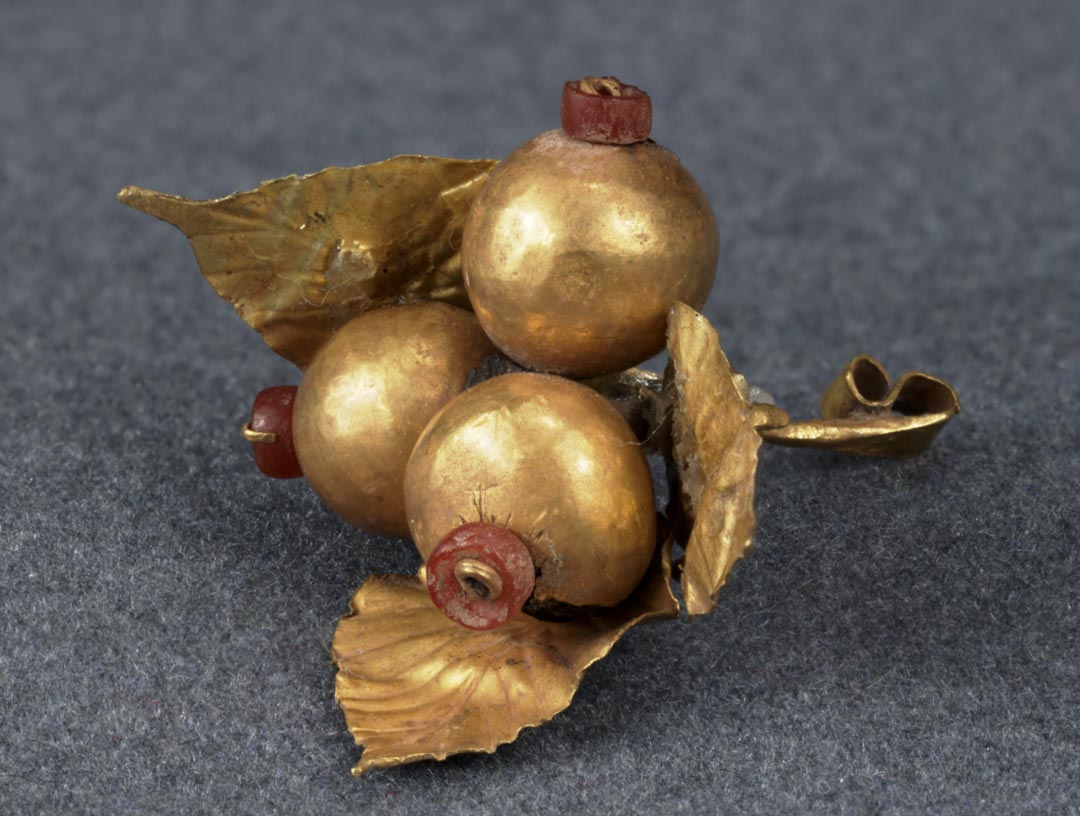Sir Leonard Woolley led the excavation of the Sumerian Royal Tombs of Ur in the 1920s, in what is now southern Iraq. Perhaps his most important find was in early December 1927 when he entered the untouched tomb of Queen Puabi. Amongst her treasures lay precious jewellery, including what is thought to be a diadem that features exquisite gold apples. Offerings to the royal ancestors also included the remains of ancient apples. The apple has been an important symbol in Asian and Arabic cultures and customs for at least five thousand years.
This story includes photographs of these finds and other artefacts from the collections of the Penn Museum in Philadelphia, USA, and the British Museum in London, UK, the two museums that funded Woolley’s expeditions. It also features two Apples & Peoples commissions, by Naï Zakharia, a French-Lebanese illustrator and Beca Beeby a Welsh jewellery maker, who respond to the symbolic importance of apples to Queen Puabi.



